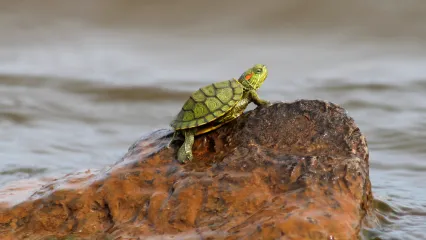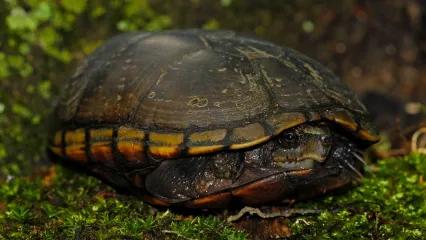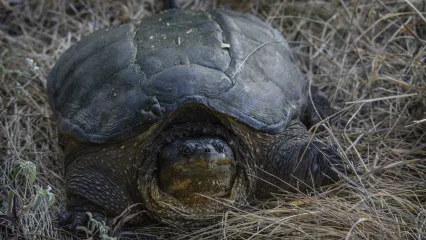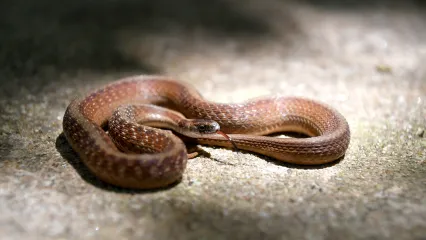
Description
The red-eared slider is arguably the best-studied turtle in North America. In all but the oldest adults, the red patch on the neck behind the eye makes these turtles distinguishable from all others in the region. Very old individuals are often melanistic (nearly all black). Even though these melanistic individuals have no red neck patch or other colors, no other turtles in western Oklahoma are all black. Thus even melanistic red-eared sliders can be easily distinguished from all other turtles in the region. The front and hind legs are webbed and the plastron is one solid structure (no hinges). Yellow vertical lines are usually present on the carapace and the yellow plastron has large black blotches in each scute.
Size
Adults reach nearly 12 inches in carapace length. Recently hatched juveniles are just over an inch in plastron length.
Habitat
Red-eared sliders occur throughout all of Oklahoma except the far western panhandle. In North America, they range from the Rio Grande Valley in New Mexico and Texas east to New Jersey, and from central Michigan in the north through Mexico, Central America, and northern South America.
Life Cycle
Red-eared sliders reach sexual maturity in 5-7 years and can live up to 25 years in natural environments. Thus, similar to most other turtles, they are late-maturing and long-lived. However, size determines whether a female will begin producing eggs, so females that grow more rapidly than others can reach sexual maturity at an earlier age than those that grow slowly. Nesting can occur as early as late April and as late as early August, but most nests are deposited in May and June. The number of eggs laid by females is associated with female size, varying from three in small females to as many as 17 in larger females. Eggs hatch from July through September, depending on temperature and rainfall. Red-eared sliders feed on a variety of aquatic invertebrates, aquatic vegetation and occasionally small vertebrates.
How To Observe
These are among the easiest turtles to observe in the field because they frequently bask on logs, rocks, and other items sitting above the surface of ponds, lakes and rivers. Simply watch ponds and streams as you drive by and you will see many of these turtles. However, if you approach basking sliders on foot, they will disappear into the water before you get close. During late spring and through summer, females in particular are easily observed crossing roads in search of nest sites.
(This profile was created by Dr. Laurie Vitt as part of a partnership between the Wildlife Department and the Sam Noble Oklahoma Museum of Natural History. It was funded as part of a larger State Wildlife Grant to survey and inventory amphibians and reptiles of the Wildlife Management Areas of Oklahoma: T-35-P-1.)



